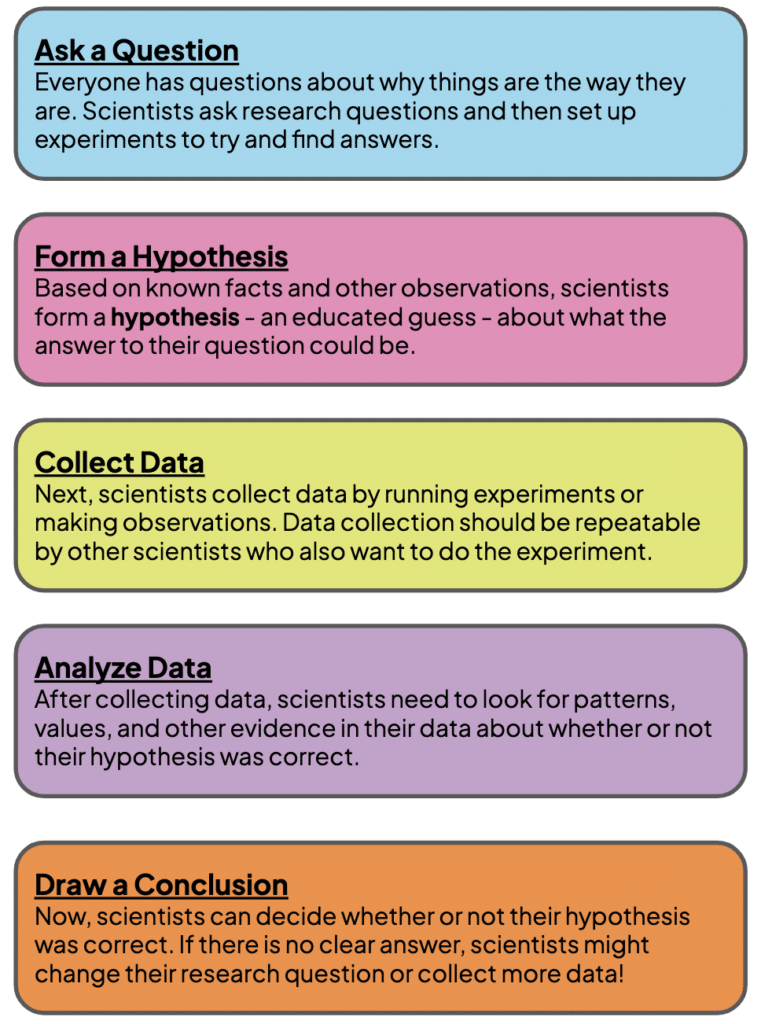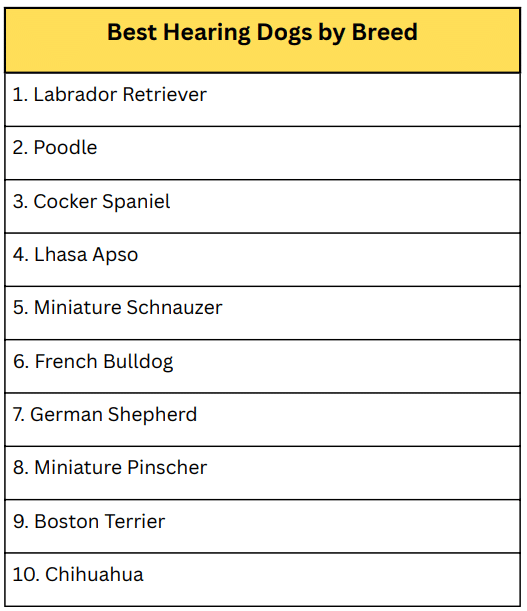How does your dog react when they hear car keys or their favorite squeaky toy?
Let’s set up an experiment to find out!

Materials
dogs
objects to make sound (like keys, their favorite toy, squirrel sounds, etc)
paper
pencil
optional: dog whistle
optional: hearing frequency testing apps
Need a Hearing Frequency Tool?
Use these to test your dog’s hearing.
Home Pet Hearing Test
The Pet Acoustics Home Pet Hearing Test is an easy, hands-on way to observe and record if your pet has full hearing. This natural method includes animal vocalizations that are familiar to your pet.
iTrainer Dog Whistle & Clicker
For Apple Products
iTrainer Dog whistle & Clicker is a simple and easy to use app that bundles a dog whistle, squeaky sounds, a training clicker, and 50+ animal sound effects to assist with training your dog or pet!
Dog Whistle
For Google
Dog whistle uses audio tone generator to emit tones in high frequency range. Humans can only hear up to 20 kHz, but dogs have much better hearing.
Activity Instructions
Set the Enviornment
Stand in a location where your dog can’t see you, like another room or around a corner.

Test
Make a sharp audible sound and see if your dog comes to you.

Document what happens and repeat.
Did your dog respond? How long did it take them?
Try various sounds and objects, like a loud whistle, clap, jingle of keys, tap on a fixed or movable object, etc.

What Was The Result?
Let’s Think…
How many different objects did you try?
Why do you think it is important to record multiple items instead of just one?
How do different dog ears help them to hear differently?
Do you think this experiment would work with other household pets?
What’s the Science?
The Scientific Method
Good experiments use the Scientific Method. All scientists use the same general process when they want to answer a question or investigate something new.
The chart below shows the steps in the Scientific Method. Remember, scientists don’t need to do every step in the Scientific Method every time, and the steps can be done in different orders!

Why can dogs hear what humans can’t?
One of the main differences is the range of frequencies in which animals hear noise. Humans can detect sounds beginning at the 20 hertz frequency and ranging up to around 20,000 hertz. Dogs have a hearing range from about 40-60,000 hertz. That is why they go crazy for dog whistles that we can’t hear. This probably helps them to hear prey that we aren’t even aware is nearby.
One additional difference between pets and people is the position of the ears. Our ears are fixed to the side of our heads, whereas animals (particularly those with erect ears) can alter their position to better trap sound. They function like little satellite dishes, swiveling around to pick up the best angle with which to hear. Even different dog breeds have ears that help them differently. Dog ears range in a variety of shapes and styles! They may hang downward, fold backward, or even stay up and alert like two TV antennas.

More Ideas
Dogs with the Best Hearing
Pooches with great hearing are valuable for hearing-challenged humans, alerting them to routine daily sounds like the boiling tea kettle, the microwave’s ding, or the doorbell. The breeds with the best hearing are fairly common, and many are already in our homes.
BAER Test for Hearing Loss
Like many animals, as dogs age they can begin to lose their hearing. Visit your local vet for a BAER testing for concerns. Brainstem Auditory Evoked Response (BAER) testing is an electro-diagnostic test used to evaluate the hearing of dogs, cats and other domestic animals. It is a non-invasive procedure that takes 5 to 15 minutes to perform.
Explore All!
Check out OMSI’s Science at Home videos and experiments.
